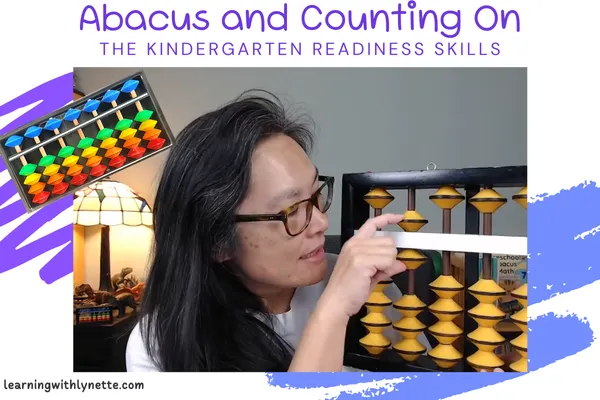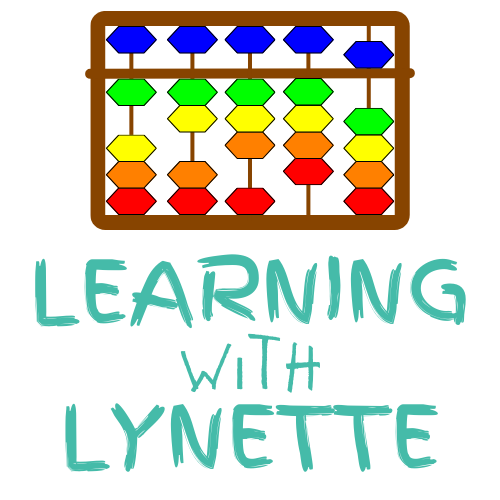
Kindergarten Skill-Counting On
Teaching early math skills can feel overwhelming for both parents and educators, but tools like the abacus make this process much more engaging. The abacus not only helps children grasp basic arithmetic concepts but also introduces an important mathematical strategy called "counting on," essential for kindergarten readiness. Here is a comprehensive breakdown of how to use the abacus for counting, addition, place value recognition, and more.
In this blog, we’ll dive deep into how the abacus works, the significance of "counting on," and how it helps children build a solid foundation for more advanced math concepts. Whether you're familiar with the abacus or it's entirely new to you, this guide will show you how to use it effectively to support your child’s learning journey.
Understanding the Abacus
The abacus is an ancient tool used for mathematical calculations. In Lynette's demonstration, she uses both a teacher’s and a student’s abacus. Each has distinct functions, but both share the common goal of teaching core math concepts. The teacher's abacus, larger in size, is typically used to demonstrate calculations to a classroom, while the student abacus is smaller and laid flat for individual practice.
Both abacuses consist of columns representing place values—ones, tens, hundreds, thousands, and so forth. Each column contains a set of beads that can be moved up or down to represent numbers. The abacus's flexibility allows students to understand how numbers are constructed and manipulated. For instance, Lynette explains that if we move beads in the ones column, we represent numbers one through four. But when we reach five, the top bead comes into play, marking a significant shift in how we calculate.
Place Values and Flexibility of the Abacus
Lynette shows how each column represents a different place value, from ones to billions. The abacus is versatile, and the place values can shift based on where the marker is placed. For example, by placing the marker on the far left column, the first few columns represent units like ones, tens, hundreds, and thousands, while shifting it further expands the value set to millions or billions.
This flexibility is a great way to introduce young learners to the concept of place value, an essential skill in understanding larger numbers. Students can move the beads to visualize how numbers increase or decrease based on their position. The abacus helps to build a mental image of mathematical operations, fostering both comprehension and speed in arithmetic.
Counting with the Abacus
Lynette emphasizes that the lower beads of the abacus represent single digits. When all beads in a column are moved to touch the beam, the abacus user is counting all available units in that column. For example, when four beads are touching the beam, that column is worth four. But what happens when the user needs to count to five?
Here’s where the abacus introduces an advanced math concept: the top bead represents a value of five. When counting past four, instead of adding more beads from the lower half, students must push the top bead to the beam, representing the value of five, and then continue counting by moving the lower beads for numbers like six, seven, and so on.
This use of the top bead prepares children to understand groupings of five, an early introduction to more complex concepts like skip counting and multiplication.
Introducing "Counting On"
A key feature of Lynette's lesson is the concept of "counting on," which is vital for kindergarten readiness. This strategy teaches children to start counting from a number other than one. For example, instead of counting all the way from one to eight, children should learn to begin from five (or any other number) and "count on" from there.
The abacus reinforces this concept naturally because the top bead for each column forces students to start from five once they’ve reached it. After the top bead is pushed to the beam (representing five), the child must continue counting from six by moving the lower beads. This simple shift helps children grasp that counting can begin from any number, not just one.
In kindergarten, counting on is a skill that children are often tested on, so mastering it early through abacus use can give them a significant advantage.
Enhancing Counting Skills with the Abacus
Lynette further explains that the abacus helps students count both forwards and backwards. This flexibility allows for practice with addition and subtraction, all within the same tool. The abacus can also be used to help children understand larger numbers, such as tens and hundreds, as they progress in their counting skills.
For instance, once a child understands that the first column is the ones place and the second column is the tens place, they can use the abacus to form numbers like 10, 15, and 20 by combining the beads in each column. The abacus makes it visually clear how numbers combine and grow, strengthening a child's number sense.
Abacus Workbooks and Activities
If you are looking for Abacus activities, I have an Abacus workbook is designed to make learning even more interactive. This workbook focuses on exercises that range from simple counting to more complex activities like recognizing numbers before and after a given digit. The exercises guide children to practice addition, subtraction, and number sequencing—all on the abacus.
This workbook also includes puzzles and games to make learning fun. One such game involves tallying answers to questions, adding a playful competitive element to learning. These games and activities help children solidify their understanding of basic arithmetic concepts in an engaging way.
Conclusion
The abacus is an invaluable tool for introducing children to fundamental math concepts like place value, counting, and "counting on." By making math visual, tangible, and interactive, it helps young learners build a strong foundation for future mathematical skills. Lynette's approach to using both teacher and student abacuses, along with her innovative workbook activities, ensures that children are not only learning but also enjoying the process.
Whether you're a parent or an educator, incorporating the abacus into your teaching toolkit can significantly enhance a child's early math development. With the abacus, learning numbers becomes a fun, hands-on experience that sets children up for success in school and beyond.
Here are links to the resources:
On Amazon
Try an abacus activity?

